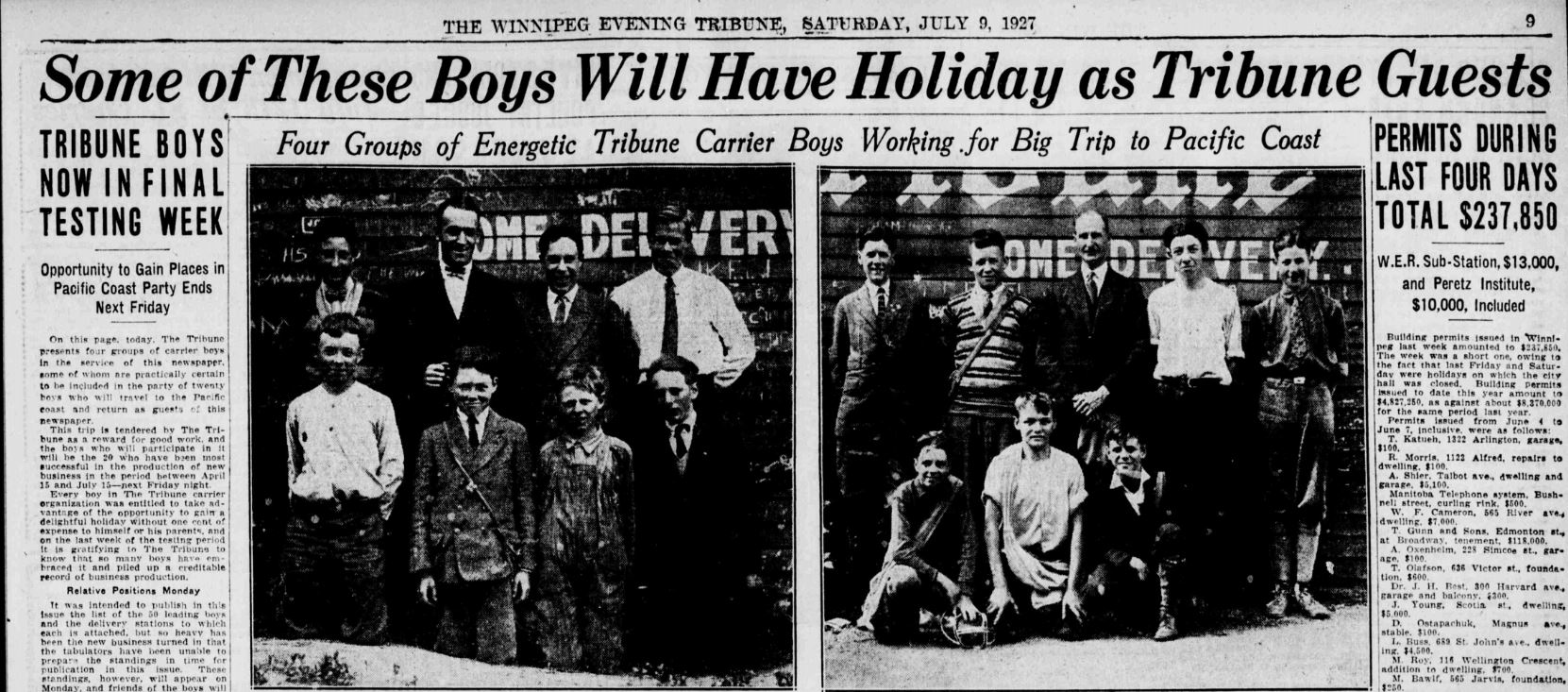The biography of S.I. Hayakawa1 describes how he remained in Winnipeg for college when his family moved back to Japan:
In 1924, Ichiro Hayakawa [S.I. Hayakawa’s father] decided to relocate his firm’s main operation [from Canada] to Japan (…) Hayakawa’s two sons remained in Canada, not only because it was their choice but because both parents recognized that Samuel [nicknamed ‘Hak’] and Fred weren’t culturally Japanese. (…) Hak,2 meanwhile, moved in with the family of one of his professors at the University of Manitoba, William Talbot Allison (…) Allison’s sons (…) had been two of Hak’s closest high school friends (…) Another of his chums was the neighborhood paperboy,3 a youngster named Marshall McLuhan, whose path would cross Hayakawa’s several times in the decades to follow.4
The Allisons lived at 600 Gertude Ave in Winnipeg:
This was just down the street from the McLuhans at 507 Gertude.
According to the biography, “Professor Allison was (…) Hayakawa’s favorite teacher” (29) in the English department at UM.5 But this was far from the case with McLuhan. As a nineteen year old in the first of his published letters, he wrote to his mother (who must have been on one of her impersonator tours at the time) complaining about their neighboring professor:
They are changing the whole [UM] English course from beginning to end. I cannot help but think that the revision should have started with the staff. I am so utterly disgusted and impatient with both [Robert F.] Argue and Allison that I should never enter their classes had I not the idea of the scholarship in the back of my head. (February 19, 1931, Letters 9)
In his biography of McLuhan, Marchand describes the same animus:
In his first lecture in English at the start of his third year (…) [McLuhan] noted that his professor, a W.T. Allison, spoke on Milton for an hour without telling him anything new. (…) In his diary, he claimed that it was impossible to imagine Allison returning again and again to a work like Paradise Lost or Gray’s Elegy for aesthetic pleasure or for edification. (Marchand 19-20)
- In Thought and Action: The Enigmatic Life of S.I. Hayakawa, Gerald W. Haslam & Janice E. Haslam, 2011. Hayakawa (1906-1992) went on from Winnipeg and the University of Manitoba English Department to become one of the foremost semanticists in the US, then the president of San Francisco State University and, finally, a famous US senator from California. ↩
- In Winnipeg Hayakawa was called ‘Hak’. Later, in grad school at the University of Wisconsin, he got the nickname ‘Don’, which stuck for the rest of his life. ↩
- A picture of McLuhan as a paperboy in 1927 — the year Hak graduated from UM and was ending his time living with the Allisons — appeared in the Tribune. McLuhan is in the picture on the right, back left:
 Thanks to R4 for the find. ↩
Thanks to R4 for the find. ↩ - In Thought and Action, 27-29. ↩
- According to Hayakawa’s bio: “Professor Allison was not only Hayakawa’s favorite teacher, but he also wrote a newspaper book-review column (for the Winnipeg Tribune). (…) “When I was nineteen years old (1925) — I remember this very vividly — Professor Allison was way behind in his weekly column. (…) He said, ‘Would you sketch one out for me?’ (…) I wrote the column — the draft of a column— the right length. He read it over and said, ‘That’s just fine; I’m going to send it out just the way it is.’ He sent it out over his name.” (29) ↩

